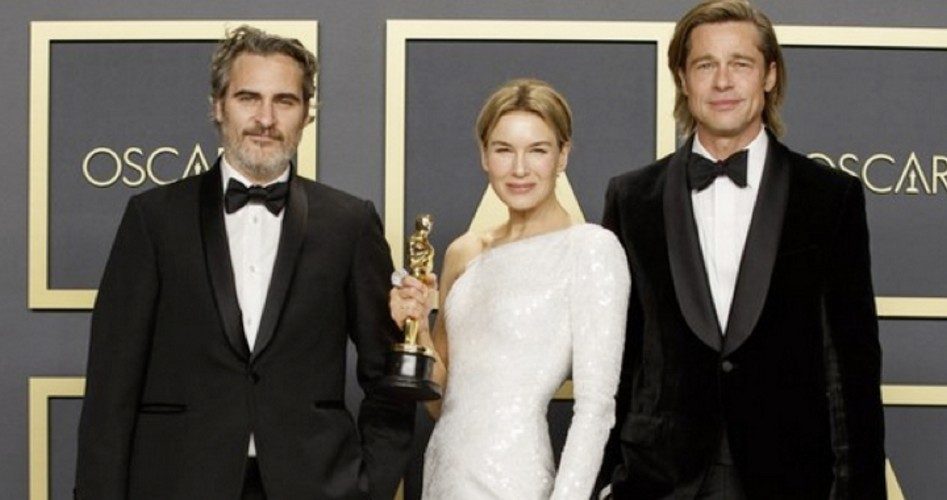
Hollywood is forging ahead in its unending effort to be hailed “Master of ‘Wokeness’” — this time with new inclusive standards from the Academy of Motion Picture Art and Sciences for any film to be nominated for Best Picture starting in 2024.
The new standards were created by a task force of the organization’s Academy Aperture 2025 initiative, established in response to the #OscarsSoWhite controversy that started five years ago.
“Academy governors DeVon Franklin and Jim Gianopulos headed a task force to develop the standards that were created from a template inspired by the British Film Institute (BFI) Diversity Standards used for certain funding eligibility in the UK and eligibility in some categories of the British Academy of Film and Television (BAFTA) Awards, but were adapted to serve the specific needs of the Academy,” explained the press release announcing the new standards. “The Academy also consulted with the Producers Guild of America (PGA), as it presently does for Oscars eligibility.”
While previous Best Picture standards merely detailed when, where, and how films were screened publicly and required a running time of more than 40 minutes, the new standards are far more convoluted. The Los Angeles Times reports:
To be eligible for best picture, a film must meet at least two standards across four categories: “Onscreen Representation, Themes and Narratives,” “Creative Leadership and Project Team,” “Industry Access and Opportunities” and “Audience Development.” Within each category are a variety of criteria involving the inclusion of people in underrepresented groups, including women, people of color, LGBTQ+ people and those with cognitive or physical disabilities. (Other Oscar categories will not be held to these same standards, but the contenders for best picture typically filter down to other feature-length categories.)
… Those standards require one of the following: at least one of the lead actors or significant supporting actors is from an underrepresented racial or ethnic group; at least 30% of all actors in secondary and more minor roles are from certain underrepresented groups; or the main storyline, theme or narrative is centered on an underrepresented group.
Under the new standards, Best Picture nominees like the World War I movie 1917 and mafia epic The Irishman would not have qualified as their casts were almost exclusively white and male.
The academy believes it has created enough flexibility to help films avoid such pitfalls through such tactics as allowing studios or production companies to meet inclusion requirements by offering paid internship or apprenticeship opportunities for underrepresented groups.
But critics contend the new standards amount to nothing more than legislating creativity. Actress Kirstie Alley took to Twitter to voice her opposition: “This is a disgrace to artists everywhere.”
She continued, “Can you imagine telling Picasso what had to be in his f–king paintings. You people have lost your minds. Control artists, control individual thought .. OSCAR ORWELL.”
Still, the Academy defends the changes as vital to ensure equitable representation on and off screen.
“The aperture must widen to reflect our diverse global population in both the creation of motion pictures and in the audiences who connect with them,” Academy President David Rubin and Chief Executive Dawn Hudson said in a joint statement. “The Academy is committed to playing a vital role in helping make this a reality. We believe these inclusion standards will be a catalyst for long-lasting, essential change in our industry.”
The new standards may not be able to withstand legal challenges, however, writes the Washington Post:
Attorneys say that under the Civil Rights Act and the 1978 Supreme Court decision in Regents of the University of California v. Bakke, race can be a factor in an institution’s eligibility requirements but quotas are not allowed. This presents a problem for any of the hard percentages set by the academy, experts said.
According to Sky Moore, a prominent entertainment lawyer and partner at the Los Angeles firm of Greenberg Glusker, the standards may also violate California’s Unruh Civil Rights Act, which prohibits discrimination for all groups.
Awards consultants are defending the new standards, claiming films that may not qualify could make simple changes that would make them eligible.
“It’s not saying, ‘Don’t make movies about White men,’” said Cynthia Swartz, a veteran awards consultant. “It’s, ‘If you do, think about inclusion. If you do, then do a lot of the basic things you should already be doing anyway.’”
But it’s that very example of liberal lecturing and political pandering from Hollywood elites that seems to have already turned so many people away from the Oscars, as the award show continues to see dramatic drops in viewership each year. The 2020 Oscars, which aired in February, marked an all-time low in viewership, with just 23.6 million people tuned in — a decline of nearly six million viewers from the previous year. The decline is even more dramatic when compared to the viewership in 2014 (43.7 million), which marked the beginning of a steady decline in ratings, with a small exception in 2019.
And still, the celebrities could not stop themselves from taking advantage of their platform at the 2020 Oscars to criticize President Trump and conservative politics, prompting criticism from outspoken comedian and five-time Golden Globes host Ricky Gervais, who had urged award winners not to get political just one month earlier while headlining the Golden Globes.
“If you do win an award tonight, don’t use it as a platform to make a political speech,” Gervais said in January. “You know nothing about the real world.”
Image: Screenshot from the Oscars



